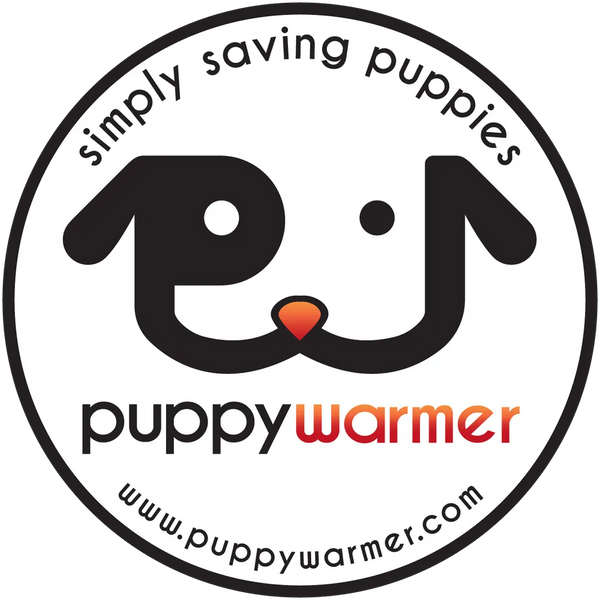Saving a Gasping Puppy
Share
If you are trying to save a gasping puppy--seconds count.
Do you have oxygen handy? Get it ready now.
If not, call your closest friend who has oxygen and ask them to bring it over. Tank or Concentrator -- Oxygen is Oxygen.
Step 1: Use a bulb syringe or DeLee Mucus trap to clear out the puppy’s lungs. Pick up the closest one and do this right now.
Step 2: Apply oxygen to the snout. The gasping puppy’s gasping reflex brings more air into its body. Make it oxygen, and the puppy likely “pinks up” in 45-90 Seconds.
Step 3: Once the puppy has “pinked up,” place it in an incubator with oxygen flowing per the manufacturer’s recommendation—often between one and two liters per minute.
Go save your puppy!
If you have a gasping puppy right now and are still reading this--STOP! The above is the “how. Do the “how and read more later.” You have a puppy to save. Go!
------------------------------------------------------------
Okay, if you are a planner and want to prevent the above situation, let’s discuss the " why” and the “what.”
Gasping puppies generally most frequently occur in the first two puppies, a Singleton, and the last two to three puppies in a litter:
- The firstborn and secondborn had excellent feeling positions in the womb. Like athletes at a training table, they have grown big and strong. More body mass. Broader shoulders. The first puppy travels through the birth canal to make the birthing process easier for other puppies but more difficult for the firstborn and often the secondborn puppies. More time and exertion in the womb can frequently result in oxygen depletion compared to the puppies that follow. Puppies depleted of much of their oxygen stores are referred to as Hypoxic Puppies. It is not fair that the puppy that worked so hard and whose efforts benefit the puppies to follow are born hypoxic. Hypoxic puppies can be revived with room air, but often, their “gut” closes much sooner than a non-hypoxic puppy. You can revive a hypoxic puppy, then lose it three weeks later due to =the vulnerability of a not well-formed immune system. The preceding sentence can be an “aha moment” for experienced breeders. Oxygen is the equalizer. As Dr. Marthina “Marty” Greer says, “Oxygen is the elixir of life. Oxygen needs to be readily available when you are delivering a litter naturally. A friend with oxygen five miles away will likely not arrive at your house in time to save a gasping puppy. Many of our customers have saved a firstborn gasping puppy that later won the best puppy in show. What an outstanding ribbon that must be.
- Singletons are much like firstborns but often have better nutrition than the well-positioned firstborn puppy. Singletons, on average, are born with more body mass than a firstborn puppy. The singleton IS the litter. The singleton is not sharing with any littermates. Singletons have a very tough time in the birth canal. It is not fun for Mom either. Veterinarians will regularly recommend c-sections for singletons, especially the very large ones.
- The last few born of a large litter can be born gasping because mom is too tired to push. Vanilla ice cream and oxygen can help with energy. She is working hard, too! Again, a long time of exertion in the birth canal is the root cause of a later puppy in a large litter. She may also be dehydrated.
The solution for all gasping puppies is the same.
Step 1: Use a bulb syringe or Delee Mucus trap to clear out the puppy. Pick up the closest one and do this right now.
Step 2: Apply oxygen to the snout. The gasping puppy’s gasping reflex brings more air into its body. Make it oxygen, and the puppy likely “pinks up” in 45-90 Seconds.
Step 3: Once the puppy has “pinked up,” place it in your Puppywarmer incubator with oxygen flowing per the manufacturer’s recommendation—often between one and two liters per minute.
You probably read this before in large, pink, bolded letters. Seconds count. You can practice this on a small stuffed animal if you are a planner. The Puppywarmer oxygen line is removed easily from the incubator for this purpose. The small cup allows for a higher concentration in this urgent time of need to “pink up” the hypoxic puppy more quickly. If you are proficient in the motion and action required, you save precious time. Plan for success. Practice.
Once the puppy has started to “pink up,” let go of the panic. The hard part is over. Place the oxygen line back in the Puppywarmer incubator and place the puppy near it. It is fine to put the oxygen line on the floor of the incubator. The mask of the Puppywarmer hand-held nebulizer also fits securely on the oxygen cup. You now have your very own oxygen megaphone for your puppy.
You can relax and focus on the whole litter a bit more. In most cases, immediately applying oxygen to a hypoxic puppy that is otherwise healthy is an endorphin-producing experience. Panic to accomplishment in 90 seconds,
Leave the formerly hypoxic puppy in the incubator for at least eight hours after it feeds and acts normally outside of the incubator. Watch the puppy take normal breaths outside of the incubator. Make sure your breathing is normal now, too. Reflect, and have a moment of celebration.
The products mentioned in this blog article are a Standard Oxygen Concentrator (built for breeders and rescue), Standard Puppywarmer incubators, and the Puppywamer hand-held nebulizer. We do our best to plan ahead so our products are ready to ship. Purchase your Puppywarmer products a couple weeks ahead of time. Plan for success. Practice.
Planners save puppies.
